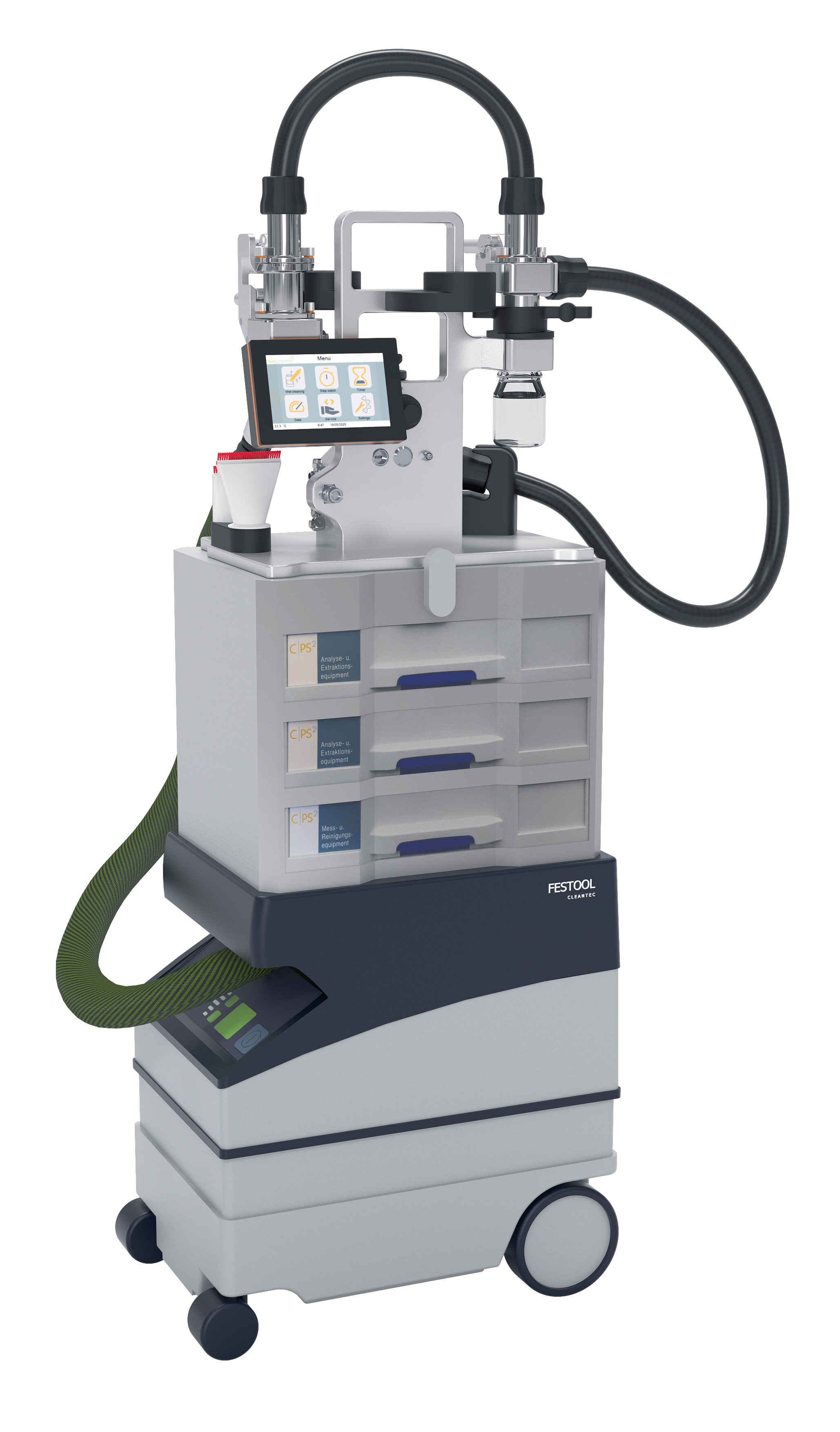Innovative cleanliness testing for connectors in e-mobility
Reproducible cleanliness testing of electrical connectors using suction extraction with adaptation
The requirements for the technical cleanliness of electrical components are constantly increasing with the advancement of e-mobility. Connectors in particular, which are responsible for the safe transmission of energy and signals, must be free of critical particles in order to ensure functionality and service life.
The third edition of VDA 19.1 describes the dry extraction method using suction as a suitable technique for cleanliness testing – especially for components that must not come into contact with liquids. CleanControlling shows a practical example of how to test connectors using a specially developed adaptation in a short video.
Efficient and targeted particle extraction
The adaptation shown was specifically developed for the extraction of cleanliness-relevant areas, such as plug contacts. The component is simply plugged onto the 3D-manufactured adapter device. Integrated blow nozzles use compressed air to loosen particles, which are then removed via a defined suction channel.
Extraction is performed with a predefined volume flow and a specified suction time, which ensures a high degree of reproducibility of the results. This method is particularly suitable for components with complex geometries or sensitive surfaces where conventional wet extraction methods are not an option.
Overview of the advantages of the method
- Dry process – ideal for sensitive electrical components
- Targeted extraction – only relevant areas are tested
- Efficient extraction – complete particle removal through targeted blowing
- Reproducible results – thanks to defined process parameters
- Flexible adaptation – 3D-printed adapters for different component geometries
Conclusion
Suction extraction with adaptation is an innovative solution for cleanliness testing of electrical connectors and other sensitive components with different cleanliness requirements per inspection area. It combines precision with practicality and is a valuable component of modern cleanliness analysis, especially in the context of electromobility.
Newsletter registration


